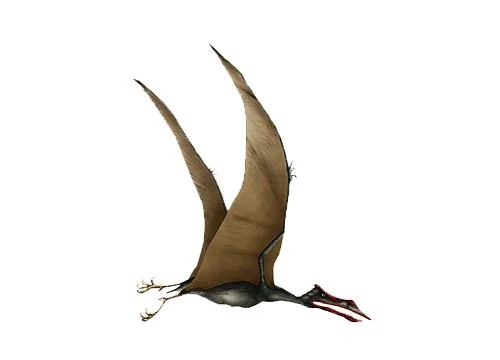Pterosaurs
Pterosaurs were a group of reptiles that lived during the Mesozoic Era, and were the first animals to evolve powered flight. They first appeared in the Late Triassic period and thrived until the end of the Cretaceous period, when they went extinct along with the dinosaurs.
Pterosaurs were not dinosaurs, but they were closely related to them, and both groups belonged to the larger group of reptiles called Archosauria. Pterosaurs were characterized by their wings, which were made of skin and stretched from the animal’s elongated fourth finger to its hind limbs. They were able to flap their wings to fly, and some species were capable of long-distance flight.
There were many different types of pterosaurs, ranging in size from the tiny Nemicolopterus with a wingspan of just 25 cm, to the enormous Quetzalcoatlus, which had a wingspan of up to 11 meters. Pterosaurs also had a wide range of diets, with some species feeding on fish, insects, or small animals, and others feeding on plants.
Some of the most well-known pterosaur groups include:
Pterodactyloids – Pterodactyloids were a group of pterosaurs that had short tails and large, forward-pointing crests on their heads. They were the largest and most diverse group of pterosaurs, and included many different species with a wide range of body sizes and shapes.
Rhamphorhynchoids – Rhamphorhynchoids were a group of pterosaurs that had long tails and smaller, backward-pointing crests on their heads. They were generally smaller than pterodactyloids and had a more limited range of body sizes and shapes.
Pterosaurs had many adaptations that allowed them to fly, including lightweight skeletons, large wings, and a specialized respiratory system that allowed them to take in more oxygen than other reptiles. They also had powerful muscles that allowed them to flap their wings, and a keeled breastbone that provided an anchor for their flight muscles.
Despite their success, however, all pterosaurs eventually went extinct, possibly due to environmental changes, competition with other flying animals, or other factors. Today, their closest living relatives are birds, which evolved after the pterosaurs went extinct and have since taken over the skies.

